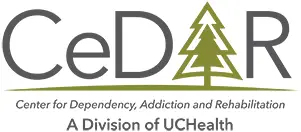TREATMENT AND CARE
When someone receives detox care, the typical approach involves helping that person withdraw safely from drugs or alcohol. It occurs in a safe setting and likely includes the use of supportive medication to help prevent a withdrawal seizure or other medical complication.
Detox has been a longstanding staple of addiction treatment, dating back to the era of the “drunk tank.” Facilities, often times within a state institution, would house people who were withdrawing from alcohol. These settings were often unpleasant and focused solely on preventing the worst outcomes from alcohol withdrawal, namely seizures or delirium. They didn’t especially help people with recovery themes, mental health support, or relationships. It is for these deficits that pure detox is not seen as a highly effective road to recovery.
Why do people often need greater stabilization BEYOND medical detox? This connects with some of the psychological factors involved in addiction, or rather, the neuro-psychological factors.
Addictive Thinking
In addiction treatment, we will often use the term Addictive Thinking to describe some of the thought patterns present within the addiction cycle. Some of the common addictive thoughts include:
- Don’t Trust
- Don’t Engage
- I Can Control This
- I Can Stop Using On My Own
- I’m Fine
Where does the addictive thinking come from? The neurological research of Nora Volkow, MD and the National Institute on Drug Abuse (NIDA) indicates that the prefrontal cortex of an addicted individual is not as responsive compared to baseline. This part of the brain helps us process information, regulate our emotions and prioritize decisions. It helps us with impulse control. When the prefrontal cortex is struggling, the individual is struggling.
The length of time someone engages in addiction treatment is directly correlated with positive outcomes. This likely is linked to the healing of the prefrontal cortex – more time gives the brain space to settle down from substance use and move closer to baseline.
As this healing process takes place, the person is going through a sort of Emotional Detox. What many people don’t realize is how a person is still very likely to relapse on substances even though they had completed a medical detox process.
Signs of Improvement
There are a few good points of advice we offer families dealing with addictive thinking. Their ability to hold effective boundaries with their family member is of utmost importance, as clinicians don’t have as much traction and persuasion as a loved one.
Start by looking for the opposite of the above examples of addictive thinking:
- Try to Trust
- Engage in the Process
- I Cannot Control This Anymore
- I Can’t Stop Without the Help of Others
- I’m Really Not Fine…I’m Unwell and That’s Why I’m in Treatment
The more a person speaks these statements as compared to addictive thinking statements, the greater the chances that a person is able to settle down, embrace change and feel better. We actively support our patients who are using the above examples of change language, especially during emotional detox. These people are being vulnerable and starting on the road to healing.
